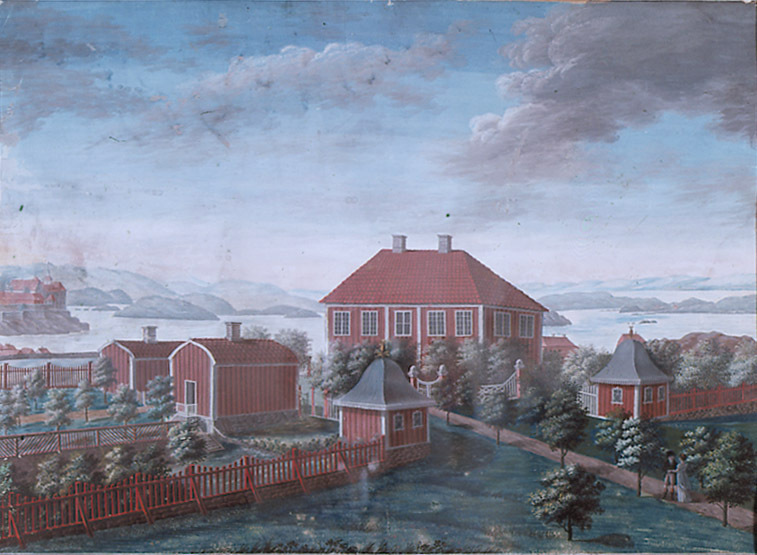The Royal Palace in Oslo is today a striking monument in the city centre of Oslo. When the castle was built, it was located outside the very centre of Oslo. The property that is today the residence of Norway’s monarch was for only 300 years ago nothing more than part of a forest.
Let us take a look at the historical development of this property – from forest to castle.

The castle is located on a hill that, until the middle of the 19th century, was located west of Oslo city centre. The hill was covered with forest and in the old eras of our history was quite unattractive to most Norwegians. The ridge of forest was owned by various large farms that encircled the capital until the 17th century.
In the 1600s, a rich upper class emerged in Norway. They often worked in the capital with trade and industry but wanted holiday properties near the city. In this way, they could stay at these properties during the hot summer and move into the city when the cold winter came.

The hill west of Oslo became very attractive as a spot to create such a summer-property as it had a good view of both the city, the fjord and the magnificent Akershus fortress. Four plots were separated at the hill from the farm that owned it and sold to rich traders from the capital. The properties were quickly sold and splendid buildings were erected that were used as summer residences for rich Norwegians. We don’t know much more about these properties from that time.
In 1697, all four properties were purchased by the very wealthy Michael Germann. He turned the four properties into one large property before tearing down the old buildings that stood there. At the now large property, Germann built a magnificent estate which he named “Bellevue”, which in French means “beautiful view”. Parts of the property were used as grain fields.

The magnificent summer residence was in the Germann family’s possession for the next hundred years. In 1800, the property was sold to merchant Hans Jacob Hansen who refurbished the property and continued to use it as a summer residence.
When Karl Johan became king of Norway in 1818, he wanted to build a magnificent castle in the capital of Norway. He inspected many plots outside the city centre. Finally, he was convinced that his castle needed to lay at the hill west of the capital where “Bellevue” was located. He thought it had a unique view and location.

By this time, Hans Jacob Hansen had died and the property was owned by his widow, Karen. She therefore sold the property to the Norwegian state, which began to blow away parts of the pointed hill peak in 1824 to make room for the castle. Construction of the castle continued for many years, until 1849.
Karl Johan never saw the castle finished. He died before the building was completed, so his son King Oscar I was the first monarch to spend a night in the castle. With that, the deserted hill west of the capital had now become the supreme symbol of the Norwegian state and monarch. By the time the castle was finished, the city centre had been moved. Now the town was built not around the fortress, but around the castle.

